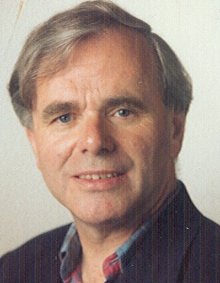Gerard Kempen, born in Ledeacker, the Netherlands, in 1943. Ph.D. from the Radboud University, Nijmegen. Professor of Cognitive Psychology at Leiden University.
Fellow (1 September 1995 – 30 June 1996)
I completed a thorough revision of the Unification Space the computational model of human syntactic processing that I have designed, implemented and tested in collaboration with colleagues from Leiden University and the University of Bergen (Norway). The model includes a grammar (called Segment Grammar) for specifying syntactic structures, and a processor that actively manipulates such structures.
To the grammar I added a conceptual representation language specifying conceptual structures that embody sentence meaning. Such structures are supposed to be ‘grammatically encoded’ (formulated) during speaking, and to be the end result of the sentence comprehension process. I also designed a new method for specifying syntactic precedence rules which are responsible for determining word order within sentences. One of the novel features is their applicability in two directions: both in language production (formulating) and language comprehension (syntactic parsing). I have worked out a detailed set of rules covering a difficult fragment of Dutch word order: major constituents within main and subordinate clauses.
The syntactic processor has been re designed on the basis of the well known neural mechanism of lateral inhibition. We have tested its dynamic behaviour extensively, and found it in much better agreement with psycholinguistic phenomena of sentence comprehension than earlier versions of the model. As for sentence production, the new Unification Space model invites an interesting hypothesis about the origin of apokoinou construction in colloquial Dutch speech. This hypothesis could be verified experimentally.
Another topic that I have studied concerns dyslexia. I have developed a connectionist framework for modelling the process of learning to read and the major phenomena of developmental dyslexia.
Most of the ideas and results listed above are finding their way into publications. I have written four substantial new papers (two of which already published), revised three earlier papers (two of them published or in press), and given nine lectures.
